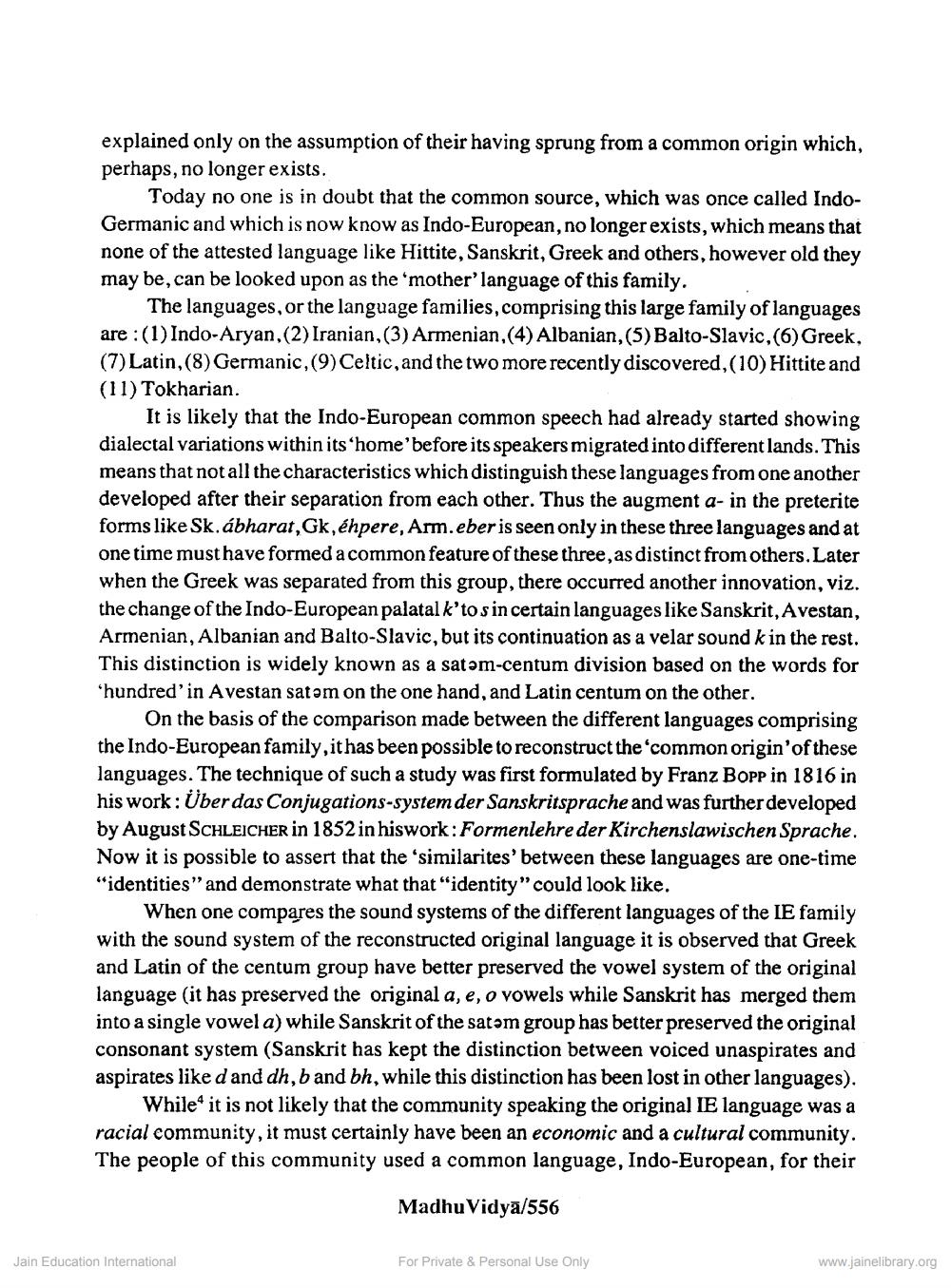________________
explained only on the assumption of their having sprung from a common origin which, perhaps, no longer exists.
Today no one is in doubt that the common source, which was once called IndoGermanic and which is now know as Indo-European, no longer exists, which means that none of the attested language like Hittite, Sanskrit, Greek and others, however old they may be, can be looked upon as the 'mother' language of this family.
The languages, or the language families, comprising this large family of languages are: (1) Indo-Aryan, (2) Iranian, (3) Armenian, (4) Albanian, (5) Balto-Slavic, (6) Greek, (7) Latin, (8) Germanic,(9) Celtic, and the two more recently discovered, (10) Hittite and (11) Tokharian.
It is likely that the Indo-European common speech had already started showing dialectal variations within its 'home' before its speakers migrated into different lands. This means that not all the characteristics which distinguish these languages from one another developed after their separation from each other. Thus the augment a- in the preterite forms like Sk. ábharat, Gk, éhpere, Arm. eber is seen only in these three languages and at one time must have formed a common feature of these three, as distinct from others. Later when the Greek was separated from this group, there occurred another innovation, viz. the change of the Indo-European palatal k'to s in certain languages like Sanskrit, Avestan, Armenian, Albanian and Balto-Slavic, but its continuation as a velar sound k in the rest. This distinction is widely known as a satǝm-centum division based on the words for 'hundred' in Avestan satǝm on the one hand, and Latin centum on the other.
On the basis of the comparison made between the different languages comprising the Indo-European family, it has been possible to reconstruct the 'common origin' of these languages. The technique of such a study was first formulated by Franz BOPP in 1816 in his work: Über das Conjugations-system der Sanskritsprache and was further developed by August SCHLEICHER in 1852 in hiswork: Formenlehre der Kirchenslawischen Sprache. Now it is possible to assert that the 'similarites' between these languages are one-time "identities" and demonstrate what that "identity" could look like.
When one compares the sound systems of the different languages of the IE family with the sound system of the reconstructed original language it is observed that Greek and Latin of the centum group have better preserved the vowel system of the original language (it has preserved the original a, e, o vowels while Sanskrit has merged them into a single vowel a) while Sanskrit of the satam group has better preserved the original consonant system (Sanskrit has kept the distinction between voiced unaspirates and aspirates like d and dh, b and bh, while this distinction has been lost in other languages). While it is not likely that the community speaking the original IE language was a racial community, it must certainly have been an economic and a cultural community. The people of this community used a common language, Indo-European, for their
Madhu Vidya/556
Jain Education International
For Private & Personal Use Only
www.jainelibrary.org




